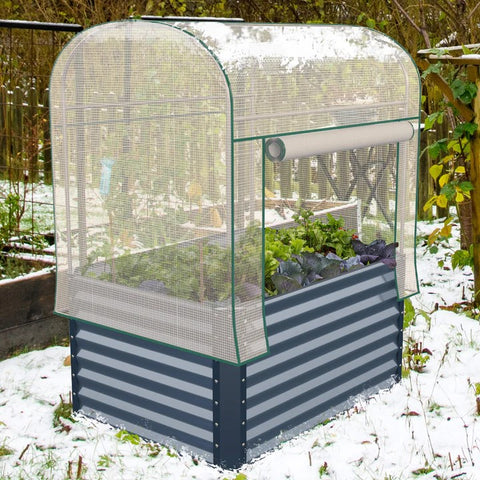In the vibrant tapestry of nature, few sights are as enchanting as a garden alive with the delicate dance of butterflies. Beyond their aesthetic allure, butterflies play a crucial role as pollinators, contributing to the health and diversity of ecosystems. This blog explores the art and science of creating a garden that not only beckons butterflies but also serves as a sanctuary for these essential pollinators. The following content also has some reference value for raised garden beds.
The Magical World of Butterfly Gardens
- Biodiversity and Balance: Butterfly-friendly gardens promote biodiversity by attracting a variety of species. This diversity contributes to a balanced and resilient ecosystem.
- Educational and Therapeutic: Beyond their ecological significance, butterfly gardens serve as educational tools and therapeutic spaces, offering a serene escape into nature.
Understanding the Needs of Butterflies
- Nectar Plants: Butterflies primarily feed on nectar, so incorporating nectar-rich plants is essential. Select a variety of flowering plants that bloom at different times to provide a continuous food source.
- Host Plants: To encourage the complete butterfly life cycle, include host plants where butterflies lay their eggs. These plants serve as nurseries for caterpillars.

Designing Your Butterfly Oasis
- Color Palette: Butterflies are attracted to vibrant colors, particularly red, orange, yellow, and purple. Choose a color palette that mimics the hues found in butterfly-friendly flowers.
- Water Features: Provide a water source, such as a shallow birdbath with stones for landing. Butterflies need water for drinking, and a shallow pool ensures their safety.
Essential Plants for Butterfly Gardens
- Milkweed: A crucial plant for monarch butterflies, milkweed serves as both a nectar source and a host plant. Its role in the monarch's life cycle makes it indispensable.
- Lavender: Known for its fragrant blooms, lavender attracts butterflies with its abundant nectar. It also adds a delightful aroma to the garden.
- Butterfly Bush (Buddleja): True to its name, the butterfly bush is a favorite among these pollinators. Its cone-shaped clusters of flowers are a visual delight.
Creating Butterfly-Friendly Micro-Habitats
- Rock Piles and Logs: Butterflies often bask in the sun to regulate their body temperature. Provide rock piles or logs where they can perch and soak up the warmth.
- Wildflower Meadows: Designate areas with native wildflowers to create natural meadows. These spaces mimic the butterflies' native habitats.
Butterfly-Friendly Garden Maintenance
- Avoid Pesticides: Chemical pesticides can harm butterflies and their larvae. Opt for natural pest control methods to maintain a healthy balance in the garden.
- Regular Pruning: Keep the garden tidy by removing dead plants and spent flowers. Regular pruning encourages the growth of new blooms and maintains an inviting environment.
Educational Signage and Interpretation
- Informative Signage: Place educational signs throughout the garden to inform visitors about the importance of butterflies, their life cycle, and the specific species that frequent the area.
- Butterfly Identification Guides: Provide guides to help visitors identify different butterfly species. This adds an interactive element to the garden
Community Engagement and Outreach
- Butterfly Workshops: Host workshops on butterfly gardening, covering topics such as plant selection, garden design, and the life cycle of butterflies. This fosters community engagement and knowledge sharing.
- School Partnerships: Collaborate with local schools to create butterfly gardens on their premises. This not only enhances educational opportunities but also expands butterfly-friendly spaces.

Documenting the Butterfly Journey
- Photography Stations: Set up photography stations equipped with butterfly-friendly plants. Encourage visitors to capture the mesmerizing beauty of butterflies, creating a visual documentation of the garden's impact.
- Citizen Science Initiatives: Involve the community in citizen science projects related to butterflies. Collect data on species sightings, behaviors, and migration patterns to contribute valuable information to scientific research.
Conclusion: Nurturing Nature's Ballet of Wings
"Fluttering Haven" goes beyond the conventional garden, transforming outdoor spaces into sanctuaries that cater to the intricate needs of butterflies. By understanding their life cycle, preferences, and ecological significance, you can curate a garden that not only attracts these pollinators but also fosters a deeper connection between nature and the community. As wings gracefully flutter amidst a riot of colors, your butterfly-friendly garden becomes not just a visual spectacle but a living testament to the delicate dance of biodiversity—a haven where the magic of nature unfolds in every petal, leaf, and pair of ephemeral wings.









